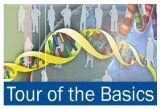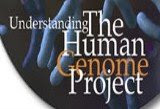Life Science Space (June 16, 2008)--Debilitating Illness Is Major Cause of Child Deaths in Developing Nations
 There are 1.9 million deaths a year in children (globally) under 5 every year due to diarrheal diseases. According to WHO, about two-thirds of these (1.3 million) occur in the 15 countries in Asia and Africa.(Image Credit: Time.com)
There are 1.9 million deaths a year in children (globally) under 5 every year due to diarrheal diseases. According to WHO, about two-thirds of these (1.3 million) occur in the 15 countries in Asia and Africa.(Image Credit: Time.com)
In a development that may lessen the epidemic of diarrhea-related deaths among children in developing countries, scientists in the laboratory of Nobel Laureate Ferid Murad, M.D., Ph.D., at The University of Texas Health Science Center at Houston have discovered a novel compound that might lead to an inexpensive, easy-to-take treatment. The results of pre-clinical tests appear in the June 16 online edition of the journal Proceedings of the National Academy of Sciences of the United States of America
The compound - a pyridopyrimidine derivative - targets acute secretory diarrhea caused by E. coli and other enterotoxigenic strains of bacteria, which produce toxins that stimulate the linings of the intestines, causing them to secrete excessive fluid, thereby producing diarrhea
Diarrhea kills an estimated 1.6 to 2.5 million children every year, according to researchers quoted in the Bulletin of the World Health Organization. Enterotoxigenic strains of bacteria may account for a significant amount of these deaths, according to an article in Clinical Microbiology Reviews. Enterotoxigenic E. coli or ETEC is a leading cause of bacterial diarrhea.
During pre-clinical tests, the compound was associated with a significant reduction in intestinal fluid secretion in an animal model of bacterial diarrhea. It was also linked to reduced fluid build up during laboratory tests on human colon cells. It caused significant decrease in fluid secretion without apparent toxicity.
This unique approach to the treatment of enterotoxigenic diarrhea works by interrupting the diarrhea-causing chain of events that occur when bacterial toxins enter the intestinal tract. The compound slows the transmission of information in the epithelial cells lining the intestines. Consequently, the molecular mediators regulating the secretion of salt and fluid in the gut do not get fully activated. ETEC comes from feces-contaminated food or water and also causes travelers’ diarrhea.
“This newly discovered compound decreases the formation of ever-present cellular messenger molecules, cyclic guanosine monophosphate and cyclic adenosine monophosphate, caused by various bacterial toxins and might prevent or attenuate the intestinal fluid secretion, diarrhea and dehydration,” said Murad, the senior author. “While this research looks extremely promising as a preventive or therapeutic intervention in Third World diarrheal disease and travelers’ diarrhea, much work remains to be done to move into clinical trials and eventual therapeutic approval.”
In the event of an earthquake, typhoon or other catastrophe, this potential diarrhea treatment could be used to treat outbreaks of enterotoxigenic E. coli caused by contaminated food and water supplies, Murad said. The compound can be placed in a pill for adults and in a liquid for children.
Secretory diarrhea describes the condition when the small intestine, which is normally an absorptive organ, is stimulated to secrete salts and water into the intestinal lumen, often in massive quantities. The resulting diarrhea can lead to profound fluid loss, dehydration, shock and death.
There are many causes of secretory diarrhea. The most common, by far, is infestation of the small intestine by certain bacteria, such as cholera or certain strains of E. coli, following ingestion of contaminated water or food. These bacteria multiply in the intestinal tract and produce toxins that bring about elevations of a group of intracellular messengers, cyclic nucleotides, that stimulate intestinal cells to secrete salt and water.
To date, there is no effective way of treating these diarrheas directly. Treatment is indirect and aimed at preventing serious outcomes by minimizing fluid loss using intravenous or, more recently, oral rehydration.
“Dr. Murad and his coworkers have discovered a relatively simple compound that indirectly inhibits the ability of several bacterial toxins to elevate intracellular levels of cyclic nucleotides, and inhibits fluid secretion by animal small intestine exposed to these toxins,” said Stanley G. Schultz, M.D., professor, associate dean for Institutional Advancement and Fondren Chair in Cellular Signaling at The University of Texas Medical School at Houston.
“These findings are a promising lead into what could prove to be a triumph of translational research of staggering importance,” Schultz said. “An inexpensive drug that could block the intestinal secretory pathway, with minimal side effects, would be a “magic bullet” that would not only save millions of lives in many parts of the developing world, but would also save the billions of dollars that are lost annually because of diarrhea throughout the world. It would truly be a treatment of diarrhea rather than a treatment of the consequences of diarrhea.” Schultz received the 2006 Prince Mahidol Award for Medicine for pioneering research that led to the development of oral rehydration therapy.
Herbert L. DuPont, M.D., professor of infectious diseases and director of the Center For Infectious Diseases at The University of Texas School of Public Health, said, “The approach being taken here is to decrease fluid loss from the intestine, which is directed to the most important body mechanism leading to acute diarrhea.”
“Current antidiarrheal therapy is less physiologic, often working through inhibition of intestinal movement leading to potential complications. A drug that stops the loss of fluid and salt from the intestine could save infant lives in developing regions and alleviate suffering that would otherwise be experienced by travelers to the tropics and subtropics,” DuPont said.
Travelers’ diarrhea affects millions of people annually. The promising treatment is the result of a 30-year investigation by Murad and long-time colleague Richard L. Guerrant, M.D., director of the Center for Global Health at the University of Virginia School of Medicine, Charlottesville, into the molecular mechanisms of ETEC, which began with the identification of a link between the messenger molecules and a bacterial strain of diarrhea pathogen from Bangladesh.
Murad credits advances in biochemistry with their discovery. “I always thought we would find a compound. We now have the right set of people and right circumstances to solve this. We found this compound while screening a library of chemical substances,” Murad said.
This area of molecular medicine is called cell signaling “You start with one molecule of a toxin or a hormone,” said Alexander Kots, Ph.D., the lead author and an instructor at the Brown Foundation Institute of Molecular Medicine for the Prevention of Human Diseases (IMM), a part of the UT Health Science Center at Houston. “The toxin binds to a target and influences it. Soon you have 10 molecules, then 100, then 1,000 and so forth. This is called signal amplification. One molecule of toxin can produce millions of molecules of water.”
Their strategy is to stop the signal amplification process early on, thereby halting enterotoxigenic diarrhea, said co-author Byung-Kwon Choi, Ph.D., a research fellow at the IMM.
“Various bacterial toxins are responsible for increasing the production of intracellular messenger molecules. These molecules contribute to the increase in fluid secretion. We discovered a compound that blocks one of the pathways responsible for ETEC diarrhea. This has never been done before,” Murad said.
Besides diarrheal disease, this potential drug, based on its mechanism of action, could have promising effects in other diseases such as inflammatory bowel disease and some endocrine disorders, Murad said.
“The relatively easy chemical synthesis (single step) and a presumed low cost should make it very attractive for therapy of diarrhea in developing countries,” Murad wrote in the paper.

Ferid Murad (Left) earned a Nobel Prize in Medicine in 1998 for the discovery of nitric oxide’s role in cardiovascular disorders. His previous work with nitric oxide led to novel therapies for hypertension, angina, pulmonary hypertension and erectile dysfunction.
An international patent application for the use of this compound to treat secretory diseases is pending.
Financial support for the study was provided by The Welch Foundation, The Dunn Foundation, The National Institutes of Health, the Department of Defense and The University of Texas Health Science Center at Houston.
Learn more about diarrhea @
Time online--
http://www.time.com/time/magazine/article/0,9171,901061016-1543884,00.html
See more @
New compound may treat serious bacterial diarrhea.
 There are 1.9 million deaths a year in children (globally) under 5 every year due to diarrheal diseases. According to WHO, about two-thirds of these (1.3 million) occur in the 15 countries in Asia and Africa.(Image Credit: Time.com)
There are 1.9 million deaths a year in children (globally) under 5 every year due to diarrheal diseases. According to WHO, about two-thirds of these (1.3 million) occur in the 15 countries in Asia and Africa.(Image Credit: Time.com)
.jpg)
.jpg)
.jpg)

.jpg)
.jpg)
No comments:
Post a Comment